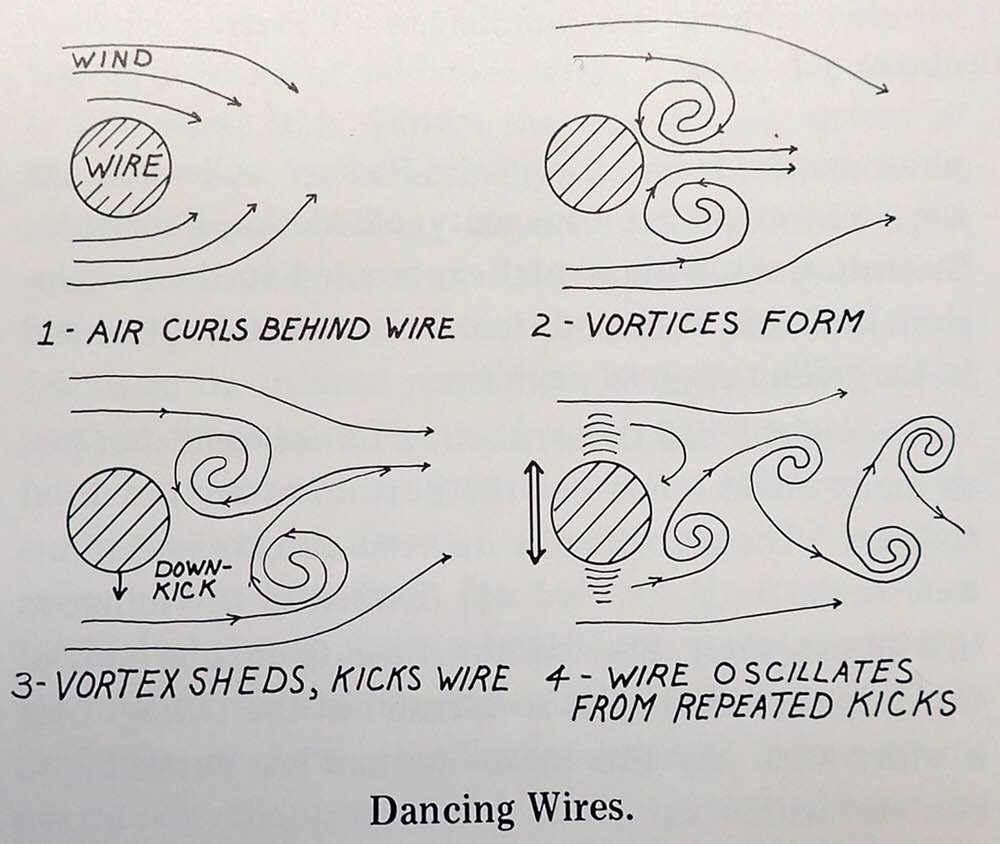In this quiet, peaceful time of year, with all the noisy birds flown south and all the scary bears in hillside dens, little things catch our attention. Like wires that move as if by magic.
Aurora scientist and interested-in-all-things guy Neal Brown contacted me to see if I had written about why power wires sometimes dance to their own beat when there seems to be no wind or other force pushing them. He notices it seems to happen when the temperature is rising. I pulled out Neil Davis’s Alaska Science Nuggets and found the answer.
First, though, a refresher on that book — a compilation of 400 of these columns — and why you are reading this right now.
Neil Davis was a do-all scientist at UAF’s Geophysical Institute from the 1960s to the 1980s. He started this column in 1976 at the urging of a newspaper editor. Davis wrote hundreds of the columns, which the Geophysical Institute has distributed free to newspapers. Other writers took over the column from Davis. I am the latest in that line, having started in fall of 1994. The directors of the Geophysical Institute have supported the column since its beginning.
Back to the dancing wires. Each wire out there has a certain tune to which it responds, known as a resonant frequency. It’s what a little girl finds when she twirls a jumprope at just the right speed and gets a perfect loop whistling through the air.
Sometimes, even if we can’t feel it, a slight breeze nudges a power wire. Wires are even more responsive to wind when snow clings to them, as it often does up here in the Interior.
“If the wire can be repeatedly tickled ever so slightly at the proper frequency, it will build up a major oscillation,” Davis wrote.
To move, wires need energy applied at their ends or in the middle. The latter is similar to a finger picking a guitar string. In this case the wind is acting as the finger.
As a guest writer of this column in 1978, late butterfly and moth expert Ken Philip described the process:
“Air moving past the wire is impeded by the wire; the air closest to the wire moves the slowest. The result is a curling up of the air behind the wire to form vortices — rotating spirals within which the air spins faster the closer it is to the center.”
These invisible little curls of air shove the wire as they depart. Sometimes those kicks happen at the sweet frequency of the wire, which responds by moving.
For the overly curious who must confirm things, Philip suggested blowing soap bubbles. They will float on a breeze that no cheek or anemometer can detect, allowing you to visualize the air that tickles the wire.
Since the late 1970s, the University of Alaska Fairbanks’ Geophysical Institute has provided this column free in cooperation with the UAF research community. Ned Rozell is a science writer for the Geophysical Institute.

